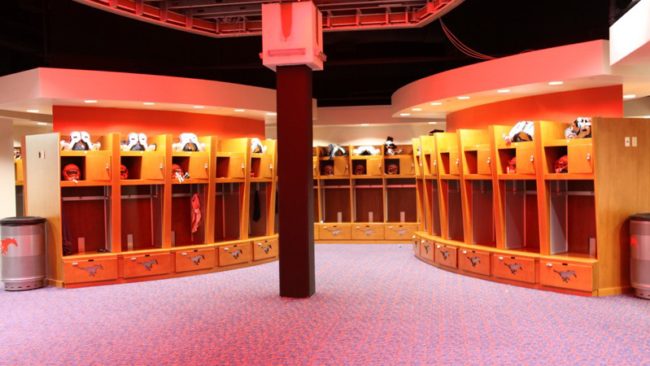In any organization, those in positions of power have to decide on how to allocate resources. In a for-profit company, this decision is made based on what projects and operations will be the most profitable. For a non-profit university, the decision is arguably more complicated. Projects must be assessed based on how they fit within the school’s mission, which is usually a collection of sentences consisting of fancy language designed to sound incredibly vague.
Athletics occupies a vague spot within the mission of any university. While SMU’s mission statement doesn’t mention anything about sports, our athletics programs are a large part of our student experience—and a large part of our budget.
SMU expects to spend $34.8 million on athletics in 2016, according to a recent report from the All University Finance Committee. This spending, which amounts to 7.5 percent of the university’s $462 million operating budget, exceeds athletic revenue by $10.1 million. The $10.1 million deficit does excludes athletic scholarships—“grants in aid”—of $19.7 million, which pushes SMU’s total athletic deficit to $29.8 million.
While this deficit may seem alarming—$2,560 per student per year—it’s actually the norm for universities to heavily subsidize their collegiate athletic programs. According to a report from the NCAA, the average Division I athletic program competing in the Football Bowl Subdivision runs a deficit of around $14.7 million, including grants in aid. Still, SMU’s $29.8 million deficit is more than double the average.
Rick Hart, SMU’s athletic director, says the gap between revenue and expenses for athletics shouldn’t be referred to as a deficit. “The university doesn’t view [athletic spending] as a deficit. A lot of people like to use that term. There’s funding that’s allocated toward athletics, just as there’s funding allocated toward other institutional endeavors that help support our operations,” he says.
Only a handful of collegiate athletic departments actually turn a profit, with all of them competing in one of the Power Five conferences. These conferences—consisting of schools with huge fan-bases and nationally competitive football programs—command lucrative television contracts that help the schools support the athletic teams that don’t earn revenue.
SMU competes in the American Athletic Conference, which is not part of the Power Five. On the other hand, TCU gained entrance into the Big-12 Conference in 2012 and earned over $40 million in football revenue during the 2013-14 fiscal year. Many students believe SMU should look to move into another conference. But Hart says getting into a Power Five conference is not one of the goals of the university.
“Our goal is to be the best program in the American Athletic Conference,” he says. “We don’t feel like conference affiliation is a hindrance to our goal to compete at a national level.”
Entry into a Power Five conference would likely boost SMU’s athletic revenues, which could help the school manage its operating budget more effectively. As my last article points out, SMU is dealing with tuition growth that is slowing down rapidly due to national concerns about higher education costs. At the same time, the university must grow its operating budget steadily to maintain high-quality faculty and grow its programs adequately to maintain its national standing.
Hart says there are no parameters for gaining entry into a Power Five conference, so SMU may have to look for other ways to deal with its financial concerns.
The Operational Excellence for the Second Century (OE2C) initiative, an operational efficiency study led by Bain & Company, was supposed to help deal with these operational concerns. While the initiative was advertised a way to repurpose unnecessary administrative spending toward academics, not all the money will go toward academics. According to the All University Finance Committee (AUFC) report, SMU plans to allocate $3.7 million per year from the OE2C savings to cover the university’s “structural deficit.” In addition to the OE2C budget cuts, the university plans to cut the merit salary raise pool for faculty. Meanwhile, the AUFC report says “university support for Athletics will continue to be substantial, ~$10 million, for at least near future.”
Despite the looming operational deficits, Hart believes that there are significant indirect benefits tied to the university’s spending on athletics.
“It’s an investment,” he says. “It’s an investment in our students… which we hope and believe not only brings revenue to the school but also helps to market and promote and position the institution regionally and nationally.”
The university’s decision to fund athletics is intended to “develop exposure to prospective students, add to the quality of the student experience, create a sense of pride, and assist with some of the diversity goals for the campus,” says Hart.
One on hand, I’m inclined to believe Hart’s argument—maybe athletics do promote the mission of a university. After all, TCU received a 42 percent increase in applications from prospective students from 2010 to 2011, which just happened to be the same year that it won the Rose Bowl.
On the other hand, there’s some evidence that the purported spillover benefits of big-time collegiate athletics are very small. Dr. Robert Frank, economics professor at Cornell’s Johnson Graduate School of Management, conducted a study to examine how college athletic success contributes to student quality and donations. The study says “the most forceful conclusion that can be drawn about the indirect effects of athletic success is that they are small at best when viewed from the perspective of any individual institution.”
While big spending on athletics may have worked at TCU, the jury is still out over whether or not it will benefit SMU.









